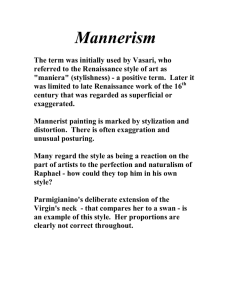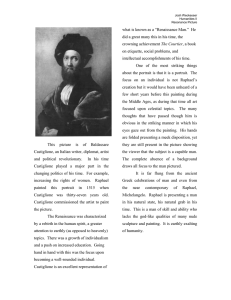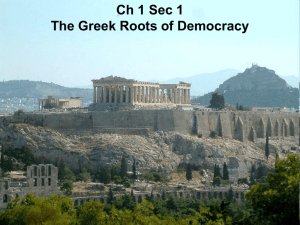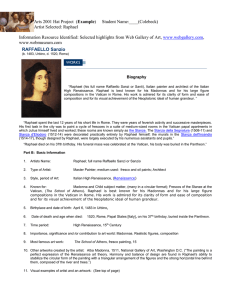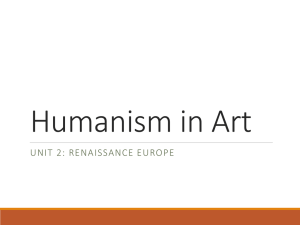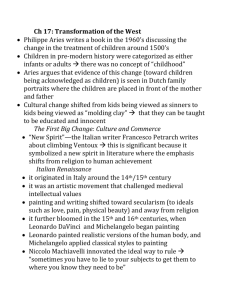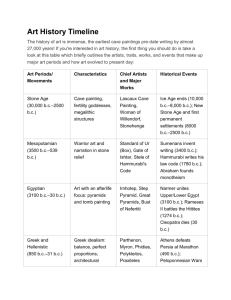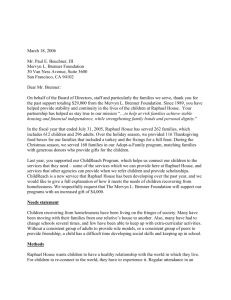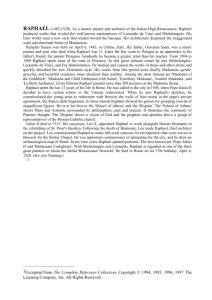Many art historians consider the School of Athens to be Raphael`s
advertisement
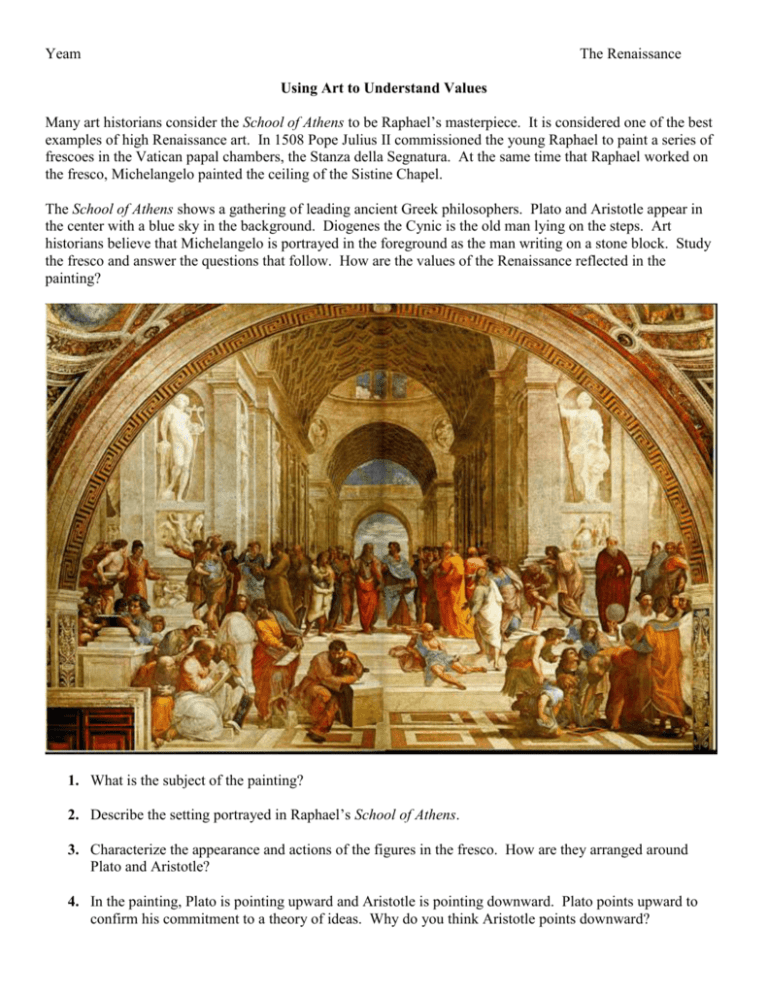
Yeam The Renaissance Using Art to Understand Values Many art historians consider the School of Athens to be Raphael’s masterpiece. It is considered one of the best examples of high Renaissance art. In 1508 Pope Julius II commissioned the young Raphael to paint a series of frescoes in the Vatican papal chambers, the Stanza della Segnatura. At the same time that Raphael worked on the fresco, Michelangelo painted the ceiling of the Sistine Chapel. The School of Athens shows a gathering of leading ancient Greek philosophers. Plato and Aristotle appear in the center with a blue sky in the background. Diogenes the Cynic is the old man lying on the steps. Art historians believe that Michelangelo is portrayed in the foreground as the man writing on a stone block. Study the fresco and answer the questions that follow. How are the values of the Renaissance reflected in the painting? 1. What is the subject of the painting? 2. Describe the setting portrayed in Raphael’s School of Athens. 3. Characterize the appearance and actions of the figures in the fresco. How are they arranged around Plato and Aristotle? 4. In the painting, Plato is pointing upward and Aristotle is pointing downward. Plato points upward to confirm his commitment to a theory of ideas. Why do you think Aristotle points downward? Yeam The Renaissance 5. On the left side of the painting is a statue of Apollo. On the right side of the painting is a statue of Athena. Why do you think Raphael included these two statues in the scene? 6. Socrates is at the left of the painting, counting out points on his figures to a group of younger men. At the right, bending over a geometric diagram is Euclid. Below him Ptolemy, also a Greek but of a later time, holds a globe. Why do you think Raphael included these men? 7. At the time the School of Athens was painted, what did Renaissance Italy have in common with the fresco subject matter? 8. What Renaissance values are reflected in Raphael’s School of Athens? 9. Which areas of learning are represented in the painting? 10. What Renaissance artistic techniques are in the School of Athens?

